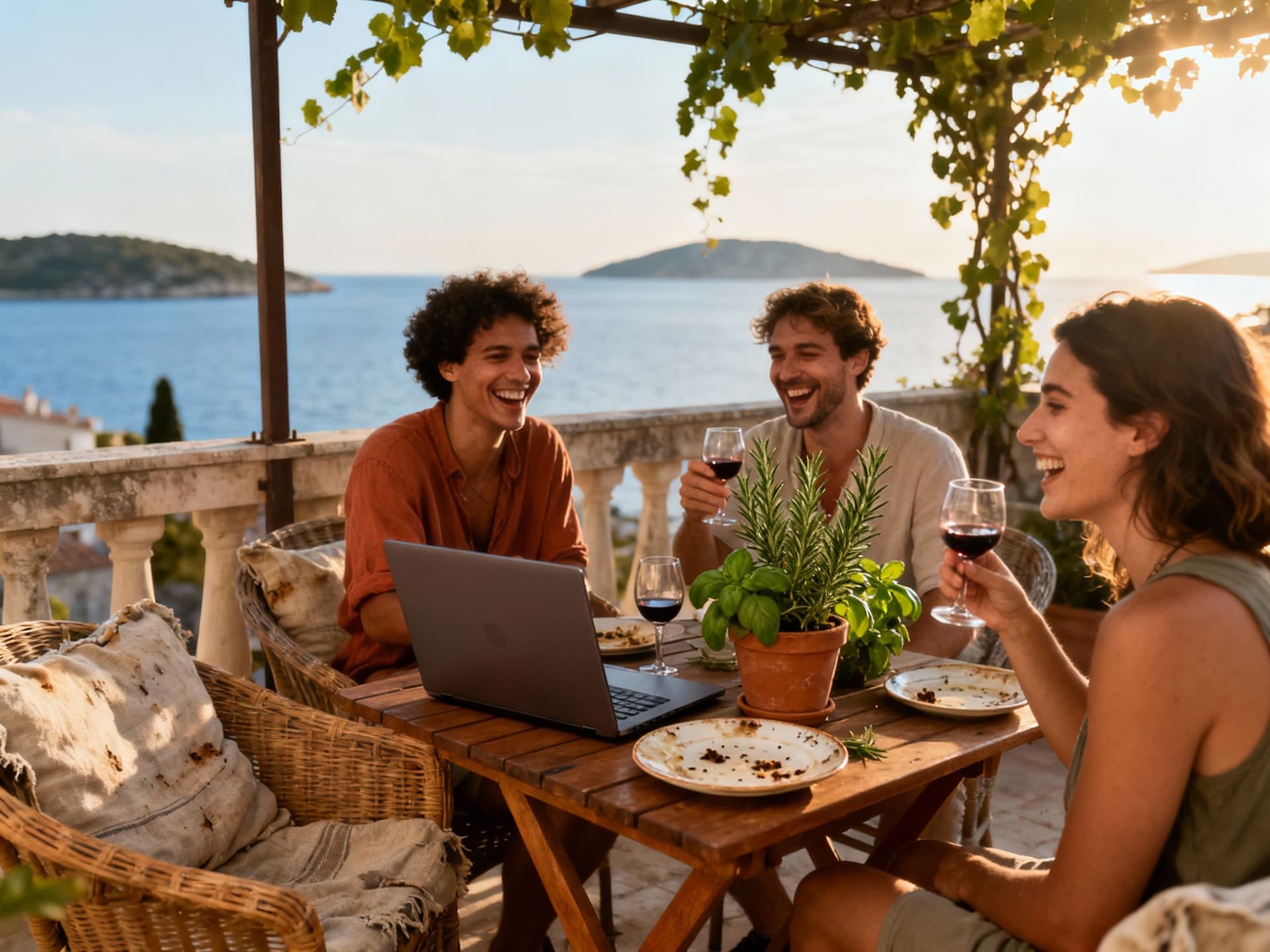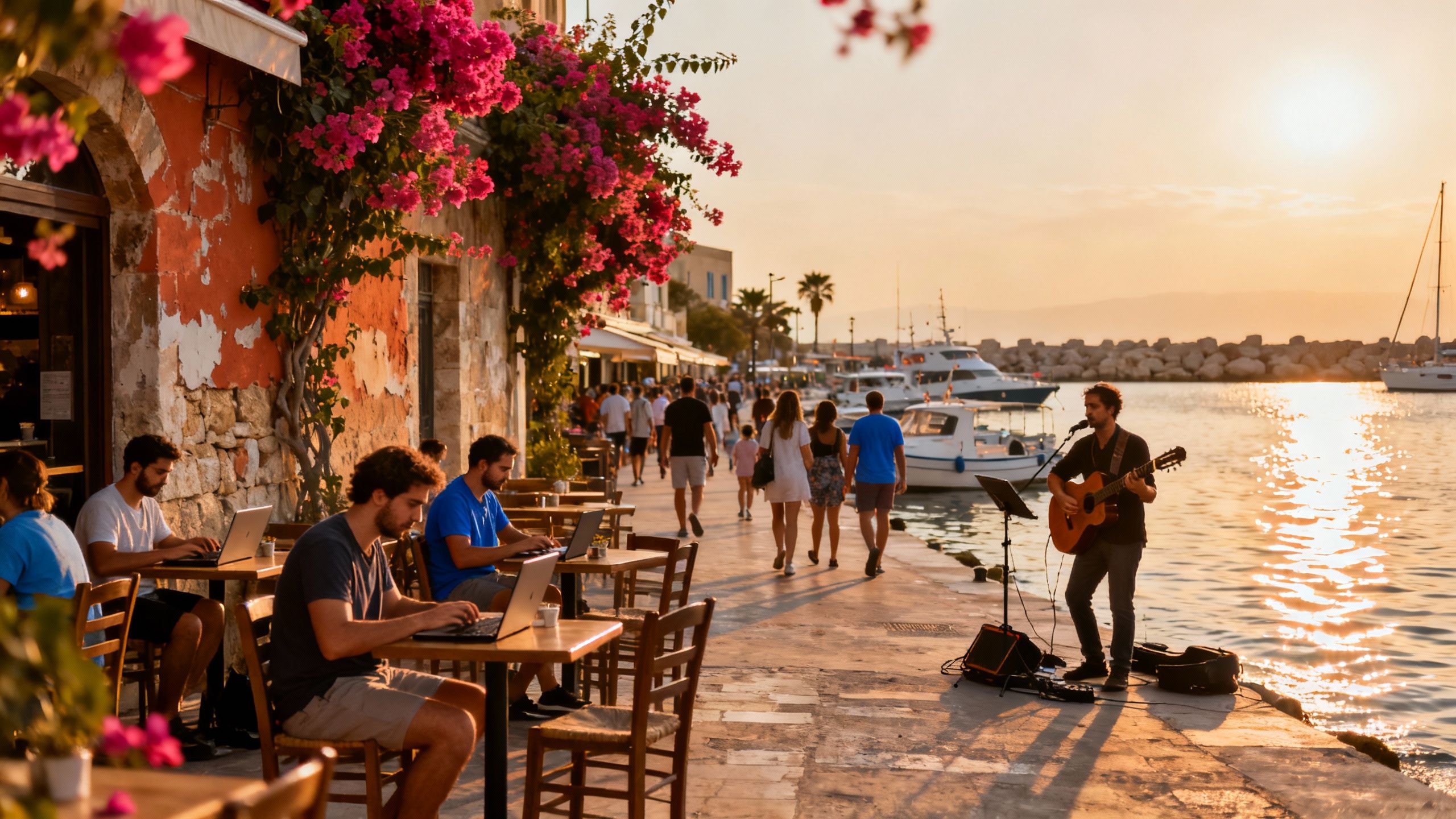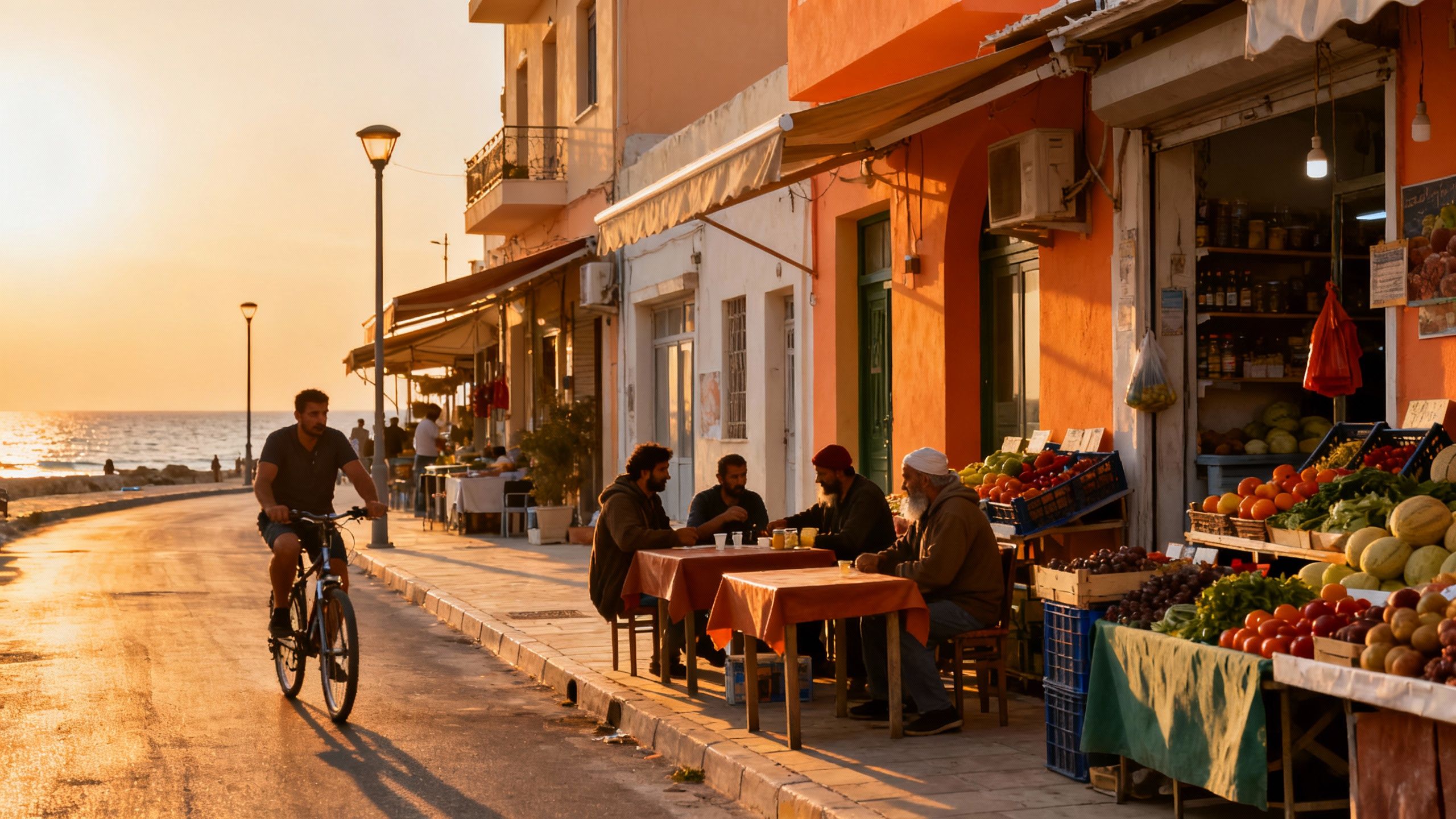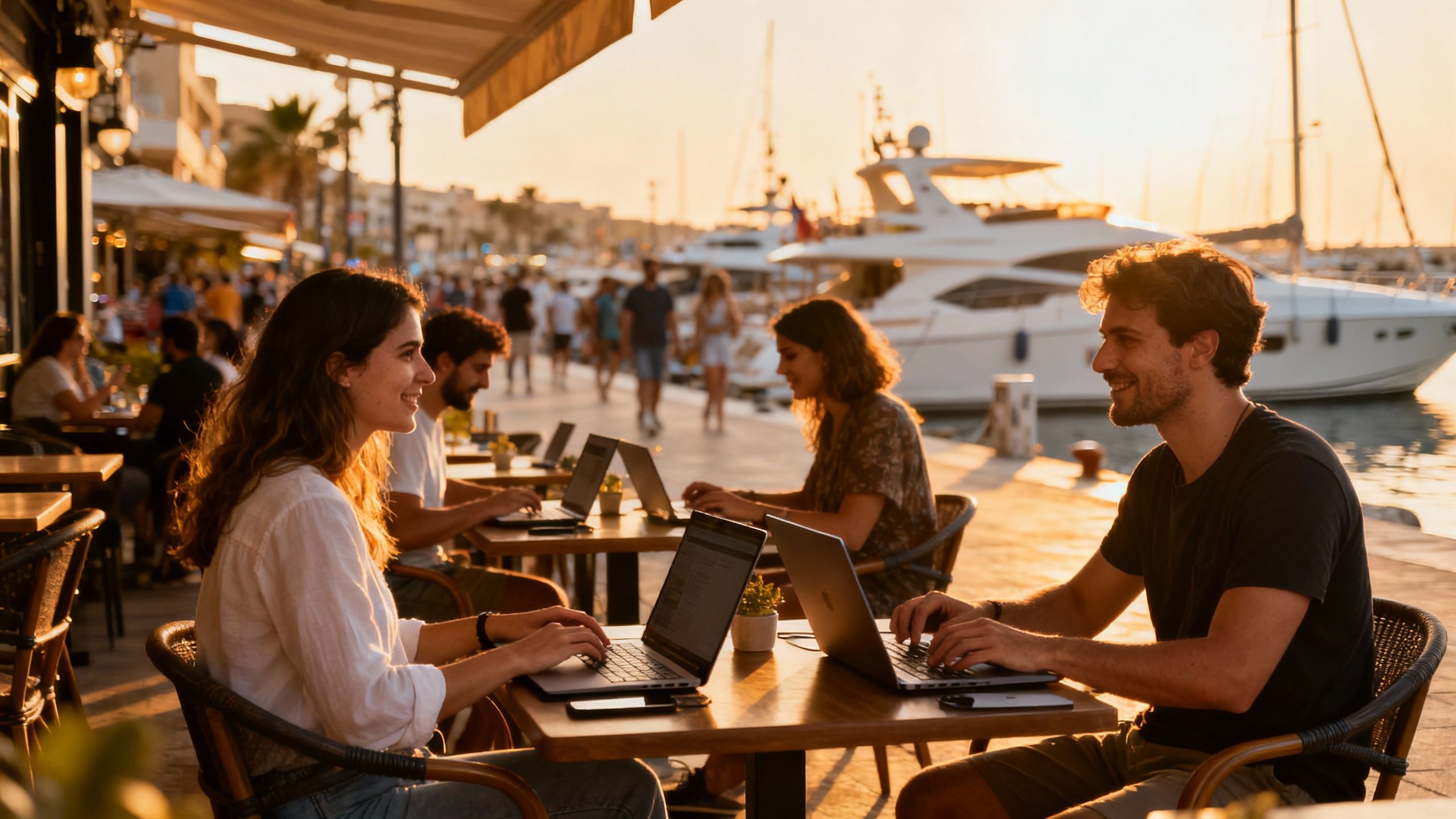Where Your Budget Disappears in Croatia (and How to Stop It)
Croatia’s postcard appeal hides seasonal costs and rising prices — use local data, a lifestyle budget and targeted due diligence to avoid budget surprises.
Imagine sipping espresso on Split’s Riva at 9am, then taking a midday swim off Bačvice before a rooftop work session with fast Wi‑Fi. Croatia sells that rhythm — sun, sea, slow markets and fast mornings — but the costs behind the postcard aren’t always obvious.
Living the Croatia lifestyle

Croatia’s daily tempo is a delicious mix of centuries‑old stone streets and modern remote‑work life. In Zagreb you’ll find coworking hubs, espresso culture and tram commutes; on the Dalmatian coast it’s fishermen unloading at sunrise, konoba dinners and bicycles along promenades. That variety is why budgets matter: where you live shapes not only price per square metre, but utilities, upkeep and how often you actually open that laptop.
Zagreb, Split, Dubrovnik — three different beats
Zagreb feels like a European capital with bakeries on every corner and reliable services — great for year‑round nomads. Split mixes ancient Roman fabric with marina life; expect seasonal tourism and higher maintenance on old stone flats. Dubrovnik is cinematic and expensive, driven by limited supply and strong tourist demand. Each city calls for a different budget plan: Zagreb for steady monthly costs, coastal towns for seasonal peaks.
Food, markets and daily rituals that shape spending
Weekends mean farmers’ markets (pazar), fresh figs, resilient bakeries, and konoba dinners. If you love local produce you’ll lower grocery costs — but eating out in tourist hotspots adds up fast. Seasonal living also matters: heating in inland winters, electricity for aircon on hot Adriatic summers, and the cost of short‑term rental management if you plan to rent when you’re away.
Lifestyle highlights: pašticada dinners in Split, Zagreb’s Hrelić market bargains, island ferry day trips, early‑morning fish markets, coworking cafés in Tkalčićeva street, late‑summer festivals and olive‑press seasons.
Making the move: practical considerations

The data is blunt: Croatian house prices have risen materially over recent years (national indices show double‑digit annual increases in many periods). That means your headline budget (price × m²) is only the start — taxes, new property levies, utilities, and seasonal upkeep change the monthly reality. Recent policy moves show Croatia shifting more tax focus onto property, which can affect running costs for owners. Plan for purchase and ongoing carrying costs before you fall in love with the view.
Property styles and how they suit your life
Stone apartments in old towns are romantic but often need insulation, electrical upgrades and stair‑climbing. New builds give modern insulation, lifts and parking but cost more per square metre. Coastal villas bring maintenance (salt air, pools, gardens); inland houses lower purchase price but raise transport time. Match property type to your day‑to‑day: if you’re a year‑round remote worker, prioritise reliable heating, fast broadband and a quiet workspace over sea‑view OOO glamour.
Local experts who protect lifestyle — and your wallet
1) Hire an agency that knows the micro‑markets — not just the coast; they’ll tell you where prices are seasonal vs structural. 2) Use a local notary and lawyer to check land registry, building permits and habitation certificates — these save major surprise costs. 3) Factor in community fees, seasonal maintenance (gardens, pools), and higher tourist‑season utility bills. 4) Ask for recent utility bills and internet provider options — reliable 100+ Mbps connections are common in cities but patchy on some islands. 5) Build a 10–15% buffer for post‑purchase upgrades (insulation, kitchen, plumbing) especially in older stock.
Insider knowledge: what expats wish they'd known
Here’s the honest stuff fellow expats tell you over coffee: the coast is stunning but expensive and seasonal; inland towns are cheaper but require a car; a stone‑bench café conversation can lead to key local contacts; and short‑term rental pressure in hotspots changes neighbourhood life. Budgeting for community and connection — language classes, local memberships, co‑working passes — matters as much as bricks and mortar.
Cultural integration and day‑to‑day living
Croatians value small‑town courtesy: greet shopkeepers, learn basic Croatian phrases, and join local konoba events. That social capital can get you renovation tips, trusted tradespeople and quieter rental opportunities. For nomads, weekend language groups and digital‑nomad meetups (common in Zagreb and Split) turn acquaintances into a backup network when life throws a maintenance curveball.
Long‑term cost trends to watch
Keep an eye on: rising national house price indices (recent DZS releases show continued increases), new property taxes or levies aimed at tourist apartments, and inflation on utilities and construction materials which raise renovation bills.
Step‑by‑step budget checklist before you bid: 1) Decide target monthly living budget (rent/mortgage + utilities + food + transport + coworking) and add 20% buffer. 2) Research local price per m² for your preferred area and property type — use DZS and local listings to ground expectations. 3) Add purchase costs (notary, registration, agency fees), estimated tax changes, and any planned renovation estimates. 4) Confirm internet speed and access to coworking; if remote work is primary, downgrade anything that jeopardises connectivity. 5) Prepare a three‑month emergency fund held in local currency for unexpected repairs or seasonal slow rental months.
Red flags that blow budgets: missing habitation permit, unclear land registry, unresolved communal debt for buildings, evidence of chronic damp/mould, and properties marketed as “investment” in heavily touristified streets where local services are disappearing.
Picture this: you swap morning commutes for a 10‑minute walk to the market, your workday punctuated by sea air and a lunchtime espresso, and evenings exploring konobas with new friends. That life is reachable — but only with a budget that sees past the photo on the listing and into the year‑round costs.
Next steps: shortlist two neighbourhoods with different profiles (city vs coast), ask a local agent for recent utility bills and building documents, and get a written quote from a builder for likely upgrades. A smart agency becomes your lifestyle translator — showing you where everyday life matches your budget and where it won’t.
Conclusion — fall in love slowly: let the markets and the data (DZS, industry snapshots and policy changes) inform how big your dream can be. Love the lifestyle first; budget second. Do both and Croatia becomes not just a beautiful place to visit, but the place you actually live well.
British expat who moved from Manchester to Mallorca in 2017. Specializes in market analysis and helping fellow Brit navigate local regulations.


